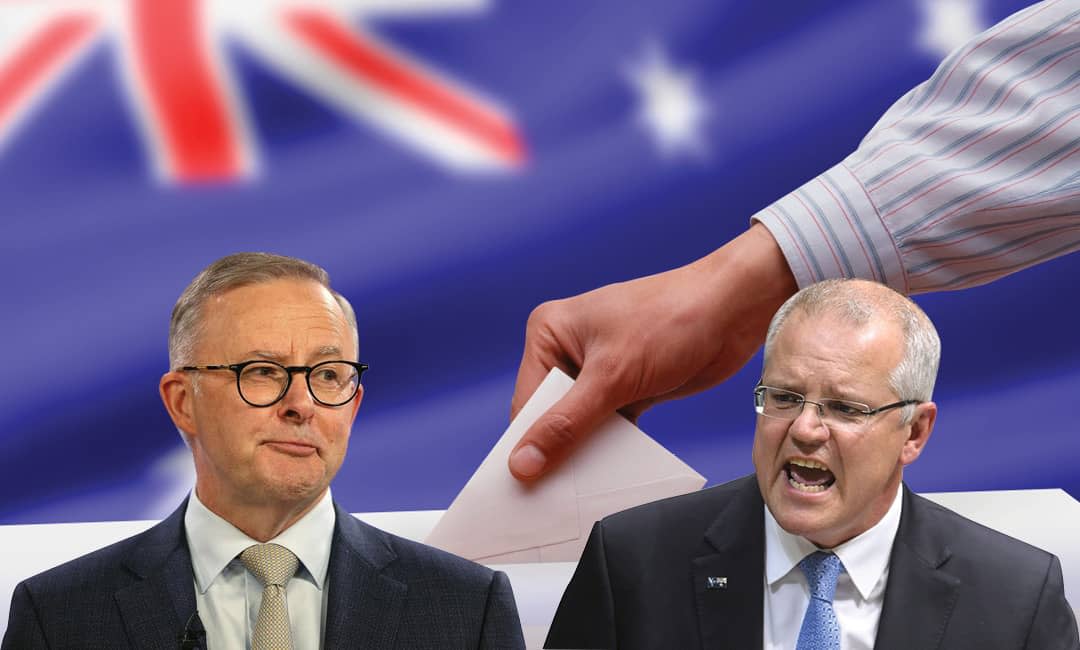Federal election 2022: Political leaders’ campaigning is silent on violence against women
Since the federal election was called, at least three women have been allegedly killed by current or former male partners, yet there’s been silence from the two men vying to become prime minister on the issue of violence against women.
As Kirstin Ferguson recently noted in her analysis of the words used by the PM and Opposition leader, neither has prioritised a commitment to recognising and reducing men’s violence in their election pitch.
They haven’t even uttered the words “violence against women”.
When is women’s safety going to get a look in this campaign? The Morrison government blundered the draft National Plan to End Violence against women and then failed to finalise it before the election. What would Labor do differently? (1) https://t.co/XWMjN8mOMc
— Kristine Ziwica (@KZiwica) May 2, 2022
During the past six weeks, the news cycle is largely reactive to announcements and talking points. The budget has come and gone. Each day is a case of who said what in the horse race of federal politics.
Read more: There’s $1.3 billion for women’s safety – and it’s nowhere near enough
At the same time, the weekly news includes the loss of life in terrible circumstances at the hands of men:
- 30 April, 2022: A woman was allegedly killed by her husband in Melbourne. She leaves behind a young son. Her husband posted his commitment to women’s rights on International Women’s Day. He’s been charged with murder.
- 16 April, 2022: Danielle Jordan died following critical injuries after falling from a moving vehicle. Her ex-partner, Michael O'Connor, has been charged with murder.
- 9 April, 2022: A Cairns woman was found by paramedics unconscious in her driveway; she died at the scene. Her male partner has been charged with murder.
(For a full and up-to-date count of the deaths of women in Australia, see Counting Dead Women Australia.)
These tragic events foreground the importance of not accepting lip service when it comes to commitments to women’s rights, and the urgency of the impact of men’s violence against women across Australia.
Less than two weeks out from a federal election, we still have no commitment from either leader on their response to the problem of ending men’s violence, or a detailed account of how we intend to get there.
Following work led by the Monash Gender and Family Violence Prevention Centre, which consulted with victim-survivors as well as advocates, experts and stakeholders, we know that the urgency of a response is understood by those working in this space and by those directly impacted who have contributed to these important consultations.
Read more: Listening to the voices of family violence victim-survivor advocates
Yet this knowledge isn’t being translated into action at the rate required or at the whole-of-government level. In fact, it remains caught up in the bureaucracy of government.
The consultation report with stakeholders across Australia remains unreleased, and there’s no firm commitment regarding when the new National Plan to End Violence Against Women and Children will be released.
Less than two weeks out from a federal election, we still have no commitment from either leader on their response to the problem of ending men’s violence, or a detailed account of how we intend to get there.
It’s critical to avoid the view that a heavy heart and tears for the awfulness of the incredible tragedy of violent deaths is enough.
We want to remind the community that understanding how we respond to men’s violence against women requires paying careful attention to the significant evidence that highlights that ending men’s violence requires all aspects of government and systems.

We know that many women are impacted by structural inequality related to, for example, being non-citizens, as Aboriginal and Torres Strait Islanders, as women living with a disability.
The case for a structural view of how we respond to men’s violence, and how we achieve equality for women across all fronts, must be front-and-centre in conversations and commitments for reform.
We argue that focusing only on women as victims belies the real challenge of disrupting the significant and deeply embedded gendered views around the acceptance of violence, and that it’s men’s violence that we need to disrupt.
Too often, piecemeal action is accepted as evidence of “doing something”, and it’s wheeled out by the women in government.
This isn’t enough in a nation where violence against women, specifically DFV, is endemic.

Structural reform should aim to reduce the load on women and the services that support them. It should not be that every increment of support is accompanied by a new system of asking women to wait, to prove, to ask nicely.
We will continue to argue that support should be easily and readily available to all women and children experiencing violence, and that this shouldn’t be different if you’re not a citizen, or if you’ve returned multiple times to an abusive partner.
We need the men who want to lead this country to stand up and be clear that men’s violence is impacting the whole community.
This isn’t about berating men, it’s about recognising that this violence is impacting the whole community, and we want a future where men don’t need to use violence against women.
While we wait for new leadership, a new National Plan to End Violence Against Women and Children, and to see what shape and action the newly announced Domestic, Family, and Sexual Violence Commission will take, we want to do what our leaders and what the media isn’t doing – reminding the community that violence against women is a national emergency, and that it’s not a women’s issue, but one that impacts us all.






